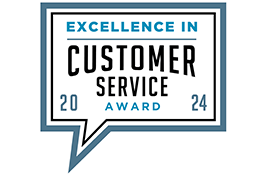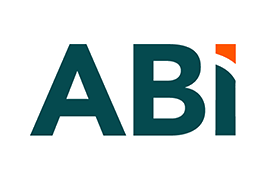What is an ELD (electronic logging device)?
Electronic logging device (ELD) definition
See our ELD solutionELD stands for Electronic Logging Device. It is Department of Transportation (DOT) mandated electronic hardware that connects to a vehicle’s engine to record driving hours. It includes a screen for the driver, so they can monitor their current status and print hour logs when required by DOT inspectors.
What is an electronic logging device?
An electronic logging device (ELD) is a hardware device that connects to a commercial vehicle’s engine. It captures vital data such as engine hours, miles driven and location information using GPS technology. By replacing traditional paper logs, ELDs provide the following:
- Accurate and tamper-proof records
- Reduces administrative burdens
- Simplifies compliance within the trucking industry.
These devices allow the driver to concentrate on safe driving, with the ELD automatically recording information such as total miles driven and engine hours.
How does an electronic logging device work?
What data does an ELD record?
When it comes to data recording, ELDs go beyond just tracking hours of service. They capture a wide range of information, including:
- Date;
- Time;
- Location of the vehicle;
- Engine power status;
- User authentication;
- Miles driven.
Additionally, ELDs record any changes in the driver’s duty status, such as when they switch between driving, on-duty, not driving, off-duty or sleeper berth. This comprehensive data collection provides a detailed overview of a driver’s activities, helping to simplify compliance and boost safety.
How are ELDs different from AOBRDs?
Before ELDs, the trucking industry used Automatic Onboard Recording Devices (AOBRDs) to record hours of service. While similar in purpose, ELDs have more advanced capabilities and must meet specific technical standards set by the Federal Motor Carrier Safety Administration (FMCSA).
ELDs have a more accurate and precise recording of driving time, and they are designed to transmit data electronically, allowing for real-time monitoring and easier inspection by authorities. As of December 18, 2017, motor carriers and drivers under the ELD rule must start using either an ELD or a “grandfathered AOBRD”. The difference between ELDs and AOBRDs is important to understand to comply with the ELD rule.
How much does an electronic logging device cost?
Who needs to use an ELD?
To ensure compliance with hours-of-service regulations, it’s essential to understand who falls under the mandate of using an ELD.
- Commercial motor vehicle (CMV) drivers: Most CMV drivers are mandated to use ELDs to record their service hours. This includes drivers operating vehicles that weigh more than 10,000 pounds, transporting hazardous materials, designed for more than eight passengers (including the driver) for compensation, or 16 (including the driver) not for compensation.
- Interstate drivers: If a CMV driver engages in interstate commerce, meaning their activities involve transporting goods or passengers across state lines, they are generally required to use ELDs.
It’s crucial to note that certain exemptions exist which might exempt specific drivers from utilizing ELDs. Exemptions include short-haul drivers operating within a particular radius, drivers utilizing paper Record of Duty Status (RODS), and drivers operating vehicles manufactured before the year 2000.
What is the ELD mandate?
The benefits of ELDs for fleet managers
ELDs offer numerous benefits for fleet managers, streamlining operations and simplifying compliance. Here are some key advantages:
- Increased accuracy: ELDs provide precise and automated tracking of driver hours, reducing the risk of errors and false reporting.
- Real-time monitoring: Fleet managers can access real-time data on driver activities, allowing them to optimize routes, plan better schedules, and simplify compliance with hours-of-service regulations.
- Boosted safety: By monitoring driver behavior and hours of service, ELDs promote road safety, reducing the risk of fatigue-related accidents.
- Enhanced efficiency: ELDs automate time-consuming tasks associated with manual logbooks, enabling fleet managers to focus on other critical aspects of their operations.
- Simplified inspections: ELDs make it easier for fleet managers to generate accurate and tamper-proof records, simplifying the process of regulatory compliance and inspections.
By investing in an electronic logging device and GPS fleet tracking software, fleet managers can boost safety, increase efficiency and simplify compliance with regulations.
Frequently asked questions about electronic logging devices
What vehicles have electronic logging devices built-in?
Electronic logging devices (ELDs) are commonly found in commercial motor vehicles, including trucks, buses, and other vehicles that are subject to hours-of-service regulations. Many newer model vehicles come equipped with built-in ELD capabilities, making it easier for drivers and fleet managers to comply with the regulations.
OEM-integrated ELD solutions are a great option for fleets to streamline their operations and ensure compliance. These built-in ELDs are often integrated into the vehicle’s existing telematics system, providing a seamless solution for tracking and recording driver hours.
Do short-haul drivers need ELDs?
Is an ELD a GPS tracker?
While ELDs utilize GPS technology to capture location data, their primary function is to record and monitor a driver’s service hours. ELDs collect data such as engine status, vehicle motion, and miles driven — in addition to GPS information.
Some ELDs may offer additional features, such as real-time tracking and fleet management capabilities, which can include GPS tracking functionality. These added features can provide fleet managers with valuable insights into their operations. Still, an ELD’s core purpose is to accurately record service hours.
How do I install an ELD?
Installing an ELD typically involves the hardware device and the software application that interfaces with it. However, the process may vary depending on the ELD manufacturer and model.
Some devices may require professional installation, while others can be easily self-installed following the manufacturer’s instructions.
Once the hardware is installed, the next step is to set up and configure the associated software application. This often involves creating an account, entering vehicle and driver information, and syncing the ELD device with the software.
The software application allows fleet managers to access and manage the collected data, generate reports, and ensure compliance. It’s important to refer to the manufacturer’s installation instructions, and user guides to ensure a smooth and accurate installation process.












